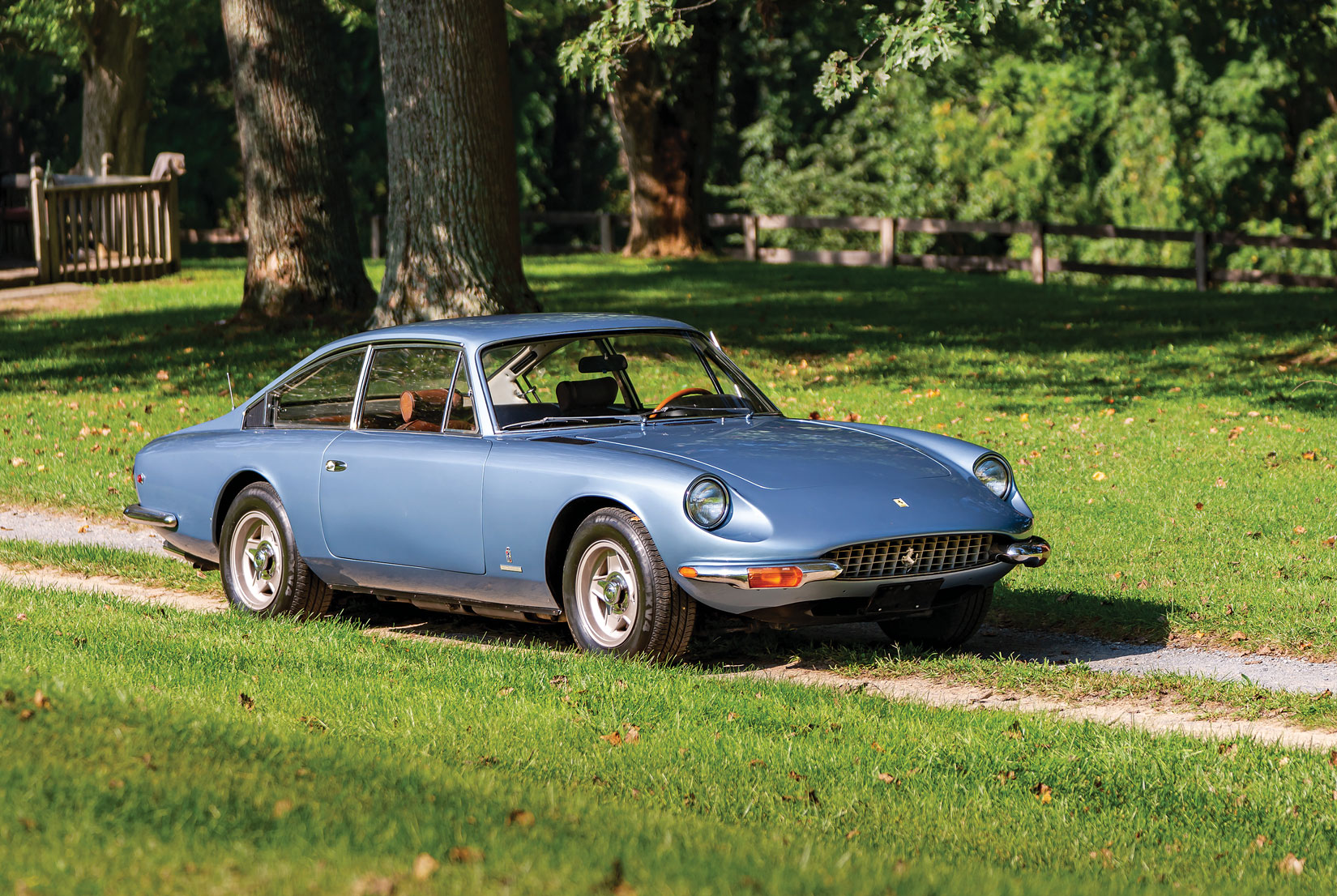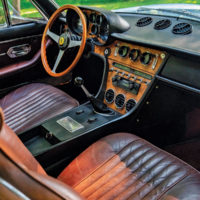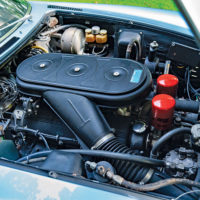SCM Analysis
Detailing
| Vehicle: | 1969 Ferrari 365 GT 2+2 |
| Years Produced: | 1968–71 |
| Number Produced: | 809 |
| SCM Valuation: | $199,000 |
| Tune Up Cost: | $3,000 |
| Chassis Number Location: | Stamped in the frame above right front spring mount |
| Engine Number Location: | Stamped on right rear side of engine block |
| Club Info: | Ferrari Club of America |
| Website: | http://www.ferrariclubofamerica.org |
| Alternatives: | 1972 BMW 3.0 CS, 1969 Jaguar E-type Series II 2+2, 1969 Lamborghini Espada |
| Investment Grade: | C |
This car, Lot 16, sold for $187,600, including buyer’s premium, at Bonhams’ Audrain Concours Auction on October 1, 2021.
If it comes as a surprise that 50% of new Ferraris sold in the mid-’60s were 2+2 models, then you are probably an American. Europeans tend to live in small towns and travel less than Americans. They also tend to have less room for parking. They are more likely to only have one car per household, and it only makes sense that the one car would be large enough to fit the whole family.
Enzo Ferrari’s marketing team recognized they could add a 2+2 model to their 250 GT line without hurting the sales of their two-place models. Ferrari’s first commercial 2+2 model was the 250 GTE, which featured a 3-liter V12 engine. The drivetrain and architecture were also similar to the famous 2-passenger 250 GT models. The handsome Pininfarina-designed GTE provided a slightly diminished 250 GT driving experience in a family car.
History repeats itself
Soon, we will see the introduction of Ferrari’s controversial FUV — Ferrari Utility Vehicle. The conflict over Ferrari’s entry into the high-performance SUV arena in some ways mirrors Ferrari’s entry into the 2+2 market. There were people who welcomed a 2+2 and others who felt Ferrari should remain a hardcore performance manufacturer.
Ferrari dulled any controversy by emphasizing the GTE’s lineage to those more sporting models. Rather than introducing the GTE at a major auto show, the 4-seater was introduced as the “course car” at the 1960 24 Hours of Le Mans. The concept was an immediate hit, with Ferrari selling more than twice as many GTEs as any previous model. I expect the FUV will be similarly accepted.
A rewarding family car
The success of the 250 GTE has led to a nearly continuous offering of Ferrari 2+2s, which have been the flagship of Ferrari production cars. They are the most luxurious models and feature the latest technology. They also have the most content of their contemporary production models and correspondingly, carry the highest price.
The 365 GT 2+2 was the third model in Ferrari’s production 2+2 series. Styling was entrusted to Pininfarina, which heavily borrowed themes from its 500 Superfast. The result is attractive, but the 365’s large dimensions compromise the design. The car was also built by Pininfarina, and close examination reveals compulsive attention to detail.
This Ferrari’s interior is spacious, with room for four adults. Luxurious leather trimmings and wool carpeting pamper passengers. Air conditioning is standard, as is power steering. European versions have power vent windows. (For unknown reasons, they are manually operated in U.S. models.)
Ferrari 365 GT 2+2s are surprisingly rewarding cars to drive. The 2-cam 4.4-liter engine is exceptionally responsive, with good torque from idle to high revs. The transmission shifts effortlessly, and assuming the sometimes-troublesome rear shocks are in good condition, the suspension is more than adequate for the large car. While on the move, the 365’s exhaust note is as sweet as you might imagine.
The features that make the 2+2s desirable also contribute to their accelerated depreciation. More drivable means more usage; 2+2 Ferraris tend to have higher mileage than the two-place models and correspondingly show more wear and tear, which decreases desirability and value. Well-kept examples can be a real bargain, but cars with deferred maintenance can be a money pit. Refurbishing a worn example can take all the fun out of a bargain price.
Average example, average result
Bonhams’ Ferrari 365 GT 2+2 was a U.S.-delivery car with a reasonably well-documented history. It was restored many years back with a new exterior and interior color palette. A look through Bonhams’ photos indicates the car is in good condition but is less than show-ready.
The alloy wheels are a good contrast to the blue paint. The interior has been modified with a burlwood dash and attractive (but non-original) brown leather upholstery. The car has the attributes of a lower-value Ferrari: the driver’s door seal is torn, the vent-window knob is missing, as are the window-crank access-hole plugs. A closer look is sure to show more issues.
Sales prices for 365 GT 2+2 models are all over the board. The variance has a lot to do with big discrepancies in condition from car to car, and the expense required to restore one. Bonhams had two 365 GT 2+2s at its 2021 Quail Lodge auction. A somewhat edgy example brought $151,200 (SCM# 6946908). A non-runner sold for $112,000 (SCM# 6946909). Across town, RM Sotheby’s sold a sharp example for $335,000 the same weekend (SCM# 6946749).
Chassis 13141 appeared to be an average example that sold for a near-average price. Assuming the buyer doesn’t find any surprises when they get home, the price paid was right on the money. Any upside will be voided by maintenance but any time on the road will be rewarding enough to warrant the cost. ♦
(Introductory description courtesy of Bonhams.)



